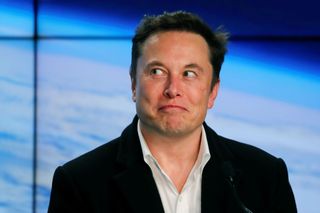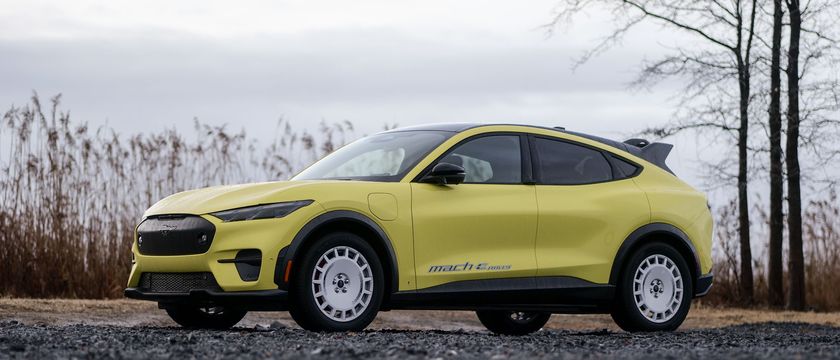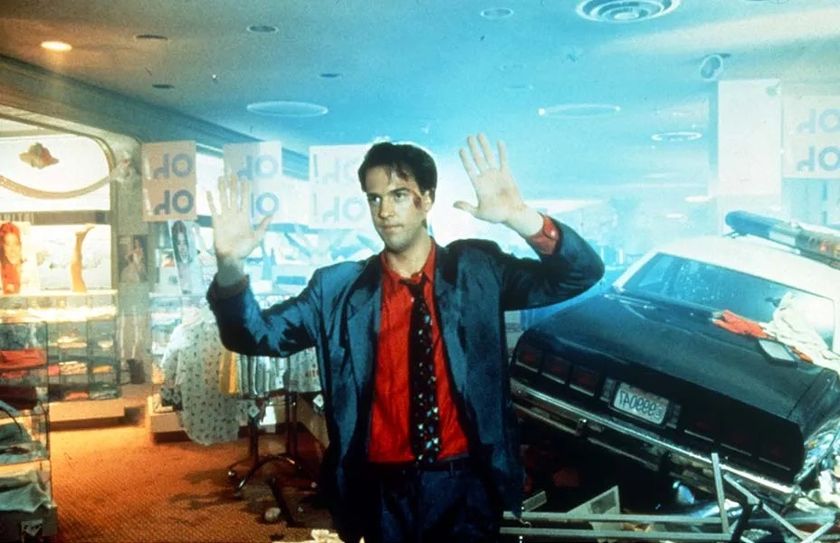Tesla 2021 report card — the best and worst of the year
Here’s all the highs and lows for Tesla in a very busy 2021

The automotive industry is in an odd place right now. Electrification is coming, but global chip shortages and other supply chain issues are wreaking havoc with their ability to create cars. Even Tesla, which has been all-electric since day one, is having some problems in that area.
But what was 2021 like for the world’s most recognizable electric-car maker? Like any company, Tesla has its fair share of problems, but it’s also managed to succeed in a number of key areas. That includes opening up its Supercharger network to other EVs, which bodes well for the future of car charging, or the fact the company actually managed to turn a profit from selling cars for the first time.
Then again, Tesla was far from perfect this year. Multiple vehicles got delayed (again), while one got cancelled outright, and the seemingly never-ending price increases aren’t making the automaker very popular. Not only that, Tesla issued a massive recall affecting 475,000 vehicles. That’s when CEO Elon Musk isn’t stirring up even more controversy. Here’s how Tesla stacked up in 2021.
Tesla’s highs in 2021

A record breaking new flagship
2021 was the year Tesla launched the Model S Plaid, a version of the Model S that was significantly upgraded. The 396-mile range may be slightly lower than the cheaper standard Model S (405 miles), but that’s not what this car was about. This car was all about the performance, and boy did it deliver.
The Model S Plaid has a top speed of 200 miles per hour, and an advertised 0-60 time of 1.99 seconds. It also has a quarter mile acceleration time of 9.2 seconds, which Tesla claimed made the Model S Plaid the fastest production car ever built. Though it may get some competition from the $2.45 million Rimac Nevera, which unofficially managed that feat in just 8.6 seconds.
Still, the Model S Plaid is a big deal. While Tesla is largely credited with helping to popularize electric cars, especially in the United States, there have been some detractors. Now, though, with the Model S Plaid’s record-breaking performance, nobody can try to claim gas or diesel offers better performance.
Sign up to get the BEST of Tom's Guide direct to your inbox.
Get instant access to breaking news, the hottest reviews, great deals and helpful tips.

Full Self Driving subscription
Autopilot is a great piece of kit, and it’s obvious that Tesla would want to turn the chance to get the newest and best features into a business opportunity. Except $10,000 is a lot of money to drop all at once, even if you can afford to buy a brand new Tesla, which is why the automaker’s ‘Full Self Driving’ subscription makes so much sense.
The service was made available to Tesla Model S and Model X owners in the U.S. earlier this year, for the price of $200 a month. That’s still a lot, but at that price it’d take you over four years before you hit the $10,000 mark. Better still, the subscription is commitment free, meaning you can cancel at any time without penalty. Pretty cool, right?
We certainly think so, though it’d be a lot cooler if Tesla expanded the program to include the Tesla Model 3, Model Y and all the international markets it operates in. After all, $10,000 is basically like a drop in the ocean compared to the Model S’s $95,000 starting price.

Supercharger expands to non-Teslas
There were no rapid EV charging networks back in Tesla’s early days, a problem the automaker got around by building its own. The Supercharger network is one of the biggest EV charging networks in the world, over 30,000 chargers worldwide, and it’s completely exclusive to Tesla drivers. Or it was..
Earlier this year Elon Musk, with some help from the promise of Norwegian financial incentives, announced that Superchargers would start allowing non-Tesla cars to plug in. By the end of the year that promise had been kept, with the first non-Tesla Supercharging trial kicking off in the Netherlands.
It’s a small start, and non-Teslas can only go to a handful of locations within the country. However, Musk confirmed non-Teslas would be available to plug in wherever Superchargers are available in the near future, which means significantly more high-speed rapid chargers will be available. Now if only Musk would do something to officially allow American Tesla drivers to plug into third-party chargers…

Record deliveries, and profits
The auto industry has not had a good time recently, especially with global supply chain issues affecting how many cars they can manufacture and sell. But Tesla actually broke its own delivery records this year, with 241,300 vehicles delivered during Q3 of 2021 — 40,000 more than the previous quarter. That itself was also a new record, and the first time Tesla has delivered more than 200,000 vehicles in a single quarter.
More importantly, Q2 2021 also marked the eighth consecutive quarter the company turned a profit. It was also the fourth quarter in a row (i.e. one full year) that Tesla managed to make a profit without selling emissions credits to automakers that don’t sell the legally required number of zero-emission sales.
But with more and more automakers developing electric vehicles of their own, that particular money train was approaching the end of the line. The fact Tesla has proven it can operate at a profit without selling credits means the long term future of the company isn’t in doubt.

Elon Musk is TIME Person of the Year
Elon Musk is quite a controversial figure, and his pick as TIME Person of the Year has not gone without criticism. There’s no doubt that the award is a boon for his various business ventures — Tesla included.
TIME’s profile doesn’t ignore Elon Musk’s various controversies, or the negative aspects of his public image, but it still paints Musk in a very positive light. Words like “visionary and “genius” are mentioned on multiple occasions, as is his relationship and history with Tesla.
Tesla is already an incredibly popular company, and despite the various criticisms leveled at its CEO this sort of prestige is only going to help.
Tesla’s lows in 2021

Flirting with Bitcoin
Cryptocurrencies are here to stay, apparently, and 2021 was the year Tesla decided to get involved. Back in March Elon Musk announced that it was possible to purchase a Tesla with Bitcoin. However, this idea didn’t last very long, just seven weeks in fact.
Musk later reversed course, with claims that Tesla was concerned about Bitcoin’s reliance on fossil fuels — particularly coal. Considering the automaker has been very outspoken against emissions and fossil fuels, it was very hypocritical to try and capitalize on cryptocurrencies considering how much energy is required to mine the coins and process transactions.
Tesla still maintains that crypto is “a good idea on many levels” but won’t be accepting Bitcoin as payment until it’s more reliant on renewable energy. It’s also claimed to be looking into accepting other cryptocurrencies that are less energy intensive.
That seemed to be coming true with the news that Tesla would accept Dogecoin for merchandise transactions. So no matter how misguided it might seem, Tesla’s affair with crypto isn’t over yet.

Autopilot woes
Tesla was subject to immense criticism this year, after the decision to outsource beta testing for its ‘Full Self Driving’ Autopilot to the general public. Even though the automaker only gave access to ‘good’ drivers, and threatened to take it away if the quality of their driving deteriorated.
Of course, that’s not all the problems Autopilot has experienced this year. The semi-autonomous tech has been linked to a number of accidents, including one where a Tesla Model 3 collided with a Florida Highway Patrol Cruiser. While Autopilot was cleared in many instances, incidents with the feature have led the NHTSA to open an investigation. Meanwhile, the NTSB is said to be “deeply concerned” over Tesla’s alleged inaction in responding to the agency’s Autopilot recommendations — suggesting this may have led to additional crashes and safety issues.
That’s not to mention all the new cases of people being caught out of the driver seat when Autopilot is engaged. Despite all the warnings that Autopilot is not full self-driving, and can “do the wrong thing at the worst time”. It turns out the safety features designed to prevent this from happening are still terrifyingly easy to trick. And Tesla isn’t the only automaker with that problem.

Delays, cancellations and more delays
2021 was supposed to be a big year for Tesla. Not only was it the year the automaker finally launched the Model S Plaid into the world, it was also supposed to see the long-awaited release of Tesla’s first trucks: the Tesla Semi and the goofy-looking Cybertruck.
Sadly, only the Model S and Model X Plaid managed to see the light of day, with Tesla trucks being pushed back to next year. The Tesla Semi will now launch in early 2022, while the first Cybertrucks won’t roll off the production line until late 2022 — a year after they were originally slated to arrive.
To make matters worse Tesla cancelled plans for the Model S Plaid Plus, expected mid-2022 with more power and range, and pushed the launch of the second generation Roadster back again. That won’t arrive until 2023 at the earliest.
The problem? Primarily supply chain issues, particularly where chips and batteries are concerned. The Cybertruck’s steel frame also needed a whole new manufacturing process, according to Tesla, which also likely led to the delay.

Supply chain woes and price hikes
Nobody is immune to the supply chain issues, not even Tesla. While the supply chain problems have led to major delays, it’s also had impacts across the rest of Tesla’s business too. The main one being the frequent price hikes across Tesla’s line-up.
Thousands of dollars added to the price of Tesla’s cars over the course of 2021. The Tesla Model 3, the cheapest car in the automaker’s line-up, started 2021 at $36,490. It now costs $44,990, which is $8,500 more expensive. To make matters worse, delivery estimates are slipping, meaning people have to wait a lot longer before their cars will arrive.
It was recently revealed Tesla was having a hard time sourcing certain parts, in this case USB-C ports and wireless chargers. So the automaker delivered cars without them, and allegedly without telling customers beforehand. While the affected Teslas eventually had those components installed, it showed that Tesla can and will make some very dumb mistakes when under pressure.

Elon is as controversial as ever
Despite the praise Tesla’s CEO gets from a lot of places, and his TIME person of the year award, Elon Musk remains as controversial as ever in 2021. Among Musk’s many controversies this year are publicly insulting people like Elizabeth Warren and Bernie Sanders for trying to make him (and other billionaires) pay more taxes, as well as revelations that Musk’s push to reopen the Tesla Fremont plant led to hundreds of new cases of COVID-19 among workers.
There’s also Musk’s awkward stint as host of Saturday Night Live, which was subject to ridicule and saw Tesla’s stock prices tumbling by 15%. It wasn’t a good look for a man whose entire public persona is being the funny, zany billionaire. Tesla’s stock has since bounced back beyond its pre-SNL levels, though Musk has been further criticized, and sued, for tweeting out things that allegedly have a direct impact on the automaker's stock price.
On top of that Musk has been a staunch critic of the Biden administration’s plans to offer better financial incentives for anyone buying electric cars assembled by union workers within the U.S. Since Tesla workers are not unionized, and Musk has been very vocally anti-union to the point he’s been accused of illegal union-busting in the past, the Tesla CEO (alongside foreign automakers) has been very vocal in his opposition.
Tesla and Elon Musk are intrinsically linked, and have been for some time. So no matter what the automaker accomplishes, good or bad, it’s going to have a hard time escaping the shadow of a CEO who seemingly can’t stop provoking controversy.

Tom is the Tom's Guide's UK Phones Editor, tackling the latest smartphone news and vocally expressing his opinions about upcoming features or changes. It's long way from his days as editor of Gizmodo UK, when pretty much everything was on the table. He’s usually found trying to squeeze another giant Lego set onto the shelf, draining very large cups of coffee, or complaining about how terrible his Smart TV is.






















